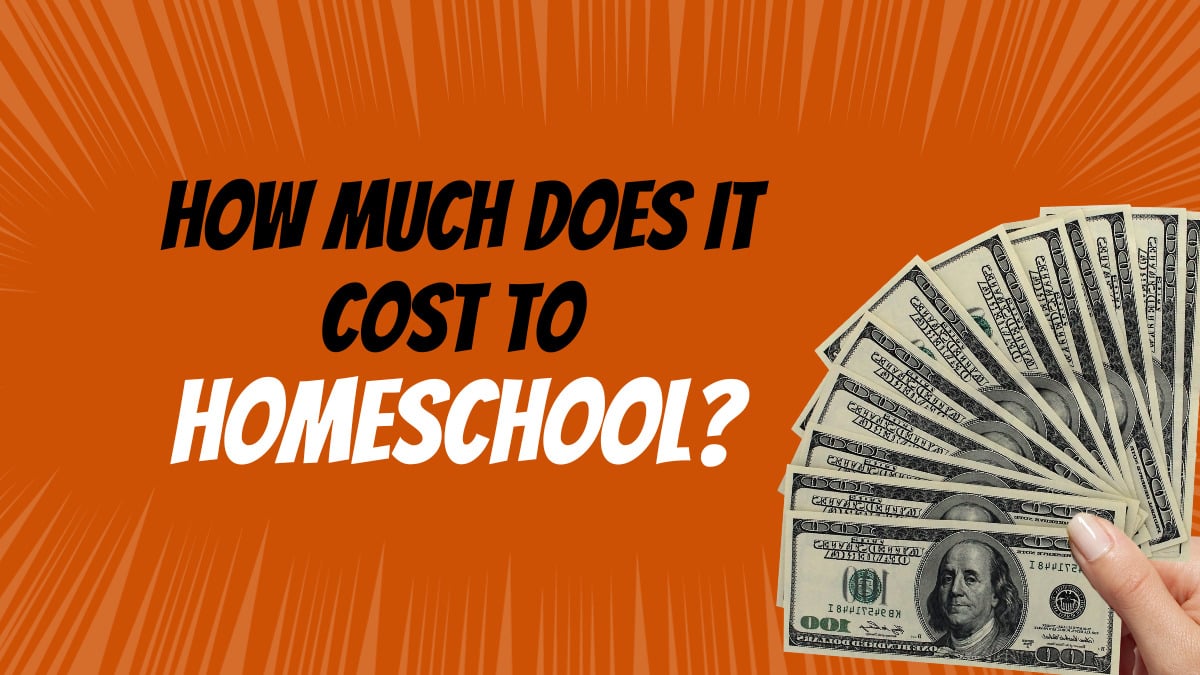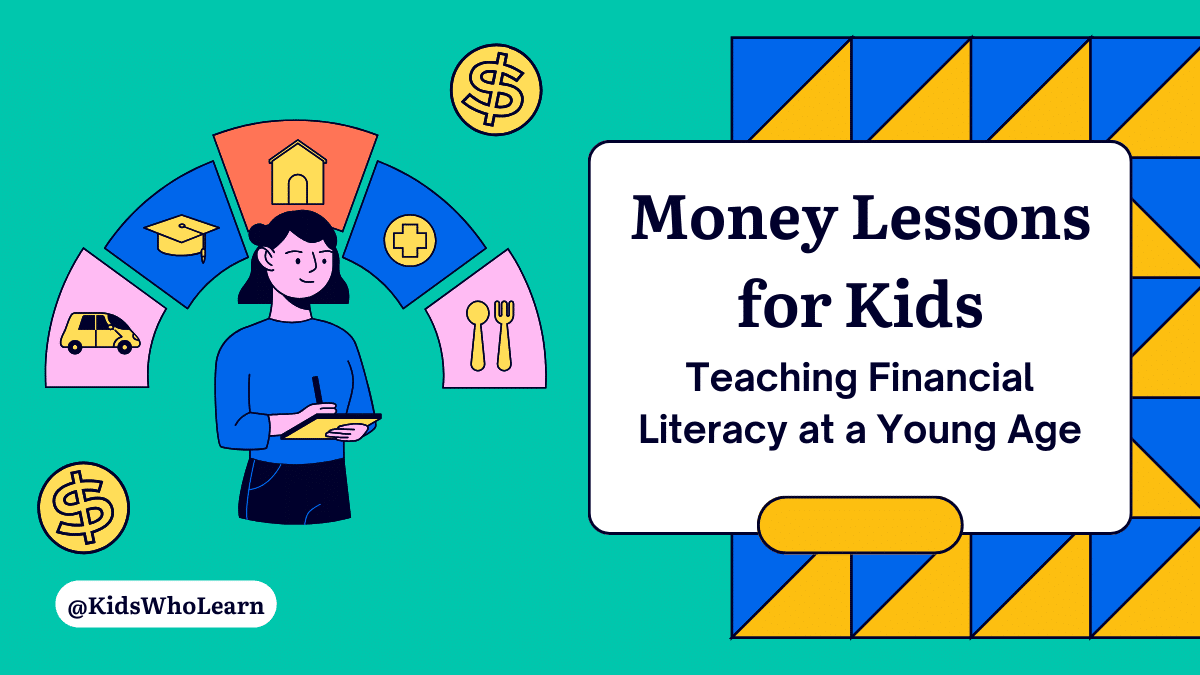Deciding to homeschool your child is a big decision, and one of the primary concerns for many parents is the cost. Homeschooling can be an affordable option for some families, while others may need to invest more in this educational choice. The cost of homeschooling varies depending on numerous factors, including curriculum, materials, extracurricular activities, and even your location.
Understanding the various costs associated with homeschooling can help you effectively strategize and budget for a successful experience. It’s important to consider not only the direct expenses, like curriculum and supplies, but also additional costs, such as potential lost income from a stay-at-home parent who will be teaching.
Key Takeaways
- Homeschooling costs vary greatly depending on factors like curriculum and materials.
- Considering both direct and additional expenses is important when budgeting for homeschooling.
- Financial strategies can help to make homeschooling more affordable for some families.
Understanding Homeschooling
What is Homeschooling?
Homeschooling is the process of educating your children at home, rather than sending them to a traditional public or private school. This approach allows you to create a customized curriculum that suits your child’s unique needs, preferences, and learning style. By doing so, you can ensure that your children receive a well-rounded and personalized education, focusing on their strengths and addressing any challenges.
As a homeschooling parent, you’ll be responsible for providing your children with the necessary resources, guidance, and support. These may include textbooks, online learning platforms, and extracurricular activities. Remember, a successful homeschooling experience requires dedication, patience, and a commitment to continuous learning and adaptation.
Why Choose Homeschooling?
There are several reasons why families might choose to homeschool their children:
- Personalized curriculum: You can tailor your child’s education to their unique interests, learning style, and aptitude, ensuring that they receive an education that is engaging and effective.
- Flexible schedule: With homeschooling, you have the freedom to design a schedule that works best for your family’s lifestyle, allowing for a better balance between education, work, and family time.
- Individual attention: You can provide your child with one-on-one instruction, ensuring they receive the attention and support they need to thrive academically.
- Control over learning environment: In a homeschool setting, you can create a safe, nurturing environment that encourages your child’s growth and development, free of distractions or negative influences.
- Family bonding: Homeschooling can foster close relationships between family members as you spend quality time together learning and discovering new things.
While homeschooling can be a rewarding experience for both you and your child, it’s essential to consider the costs and effort involved in this educational approach. Make sure to research and plan accordingly to ensure a successful homeschool journey.
Homeschooling Costs
Factors that Influence Homeschooling Costs
When considering homeschooling, it’s essential to be aware of the factors that can impact the overall cost. Different elements can influence the budget you need to allocate for your child’s education. Here are a few key factors to keep in mind:
- Curriculum: The learning materials you choose for your child will greatly affect the cost. Pre-packaged curriculums can range from $300 to $1,500 per year, depending on the grade level and subject matter.
- Extracurriculars: While homeschooling allows flexibility in learning schedules, it might mean additional costs for extracurricular activities such as sports, music lessons, or clubs. These costs can vary widely based on the type and frequency of the activities.
- Educational Resources: Along with curriculum, you’ll need to invest in various supplies like textbooks, workbooks, and stationery items, as well as technology devices like computers and software.
- Field Trips and Learning Experiences: Homeschooling often includes real-world experiences and field trips that can enhance your child’s learning. These trips’ expenses, including transportation, admission, and guided tour fees, must also be factored into your homeschooling budget.
Average Cost Across the U.S
The average cost of homeschooling can vary significantly based on the factors mentioned above, as well as where you live in the United States. A general estimate of the annual cost per child for homeschooling ranges between $700 and $1,800. Here’s a rough breakdown of these expenses:
- Curriculum and Materials: $300 to $1,500
- Extracurricular Activities: $100 to $500
- Educational Resources: $100 to $500
- Field Trips and Learning Experiences: $50 to $300
Keep in mind that your expenses may differ from this average range depending on your choices and location. But with careful planning and budgeting, you can provide a quality education for your child while keeping homeschooling costs manageable.
Curriculum Costs
Printed Materials Cost
When planning your homeschooling budget, consider the costs of printed materials. You’ll need textbooks, workbooks, and supplemental materials for each subject. Here’s a rough estimate of expenses:
- Textbooks: $30-150 per subject, depending on the publisher and grade level.
- Workbooks: $10-30 per subject, which usually includes activities and practice exercises.
- Supplemental materials: $5-20 per subject for items such as flashcards and reference guides.
Keep in mind, you can reduce these costs by borrowing books from libraries, buying used materials, or sharing resources with other homeschooling families.
Digital Resources Cost
In today’s digital age, online resources play a significant role in homeschooling. While some websites offer free materials, there are premium resources available to enhance your child’s education. Here is a breakdown of some common digital resources:
- Online curricula: $50-300 per subject, often offering a comprehensive plan and ready-made lessons.
- Learning apps: $5-20 per app, which can provide interactive lessons and practice in specific subject areas.
- Educational websites: $0-50 per year, with a wide range of subjects and materials for different age groups.
Remember, you can mix and match resources to suit your child’s needs, learning style, and your budget. Don’t forget to make use of free options, like open-source textbooks and educational YouTube channels, to supplement your chosen curriculum.
Cost Reduction Strategies
Shared Resources
When considering homeschooling, sharing resources with other homeschooling families can be a great way to reduce costs. You can collaborate with others to purchase or borrow books, manipulatives, and learning materials for various subjects. Joining a local homeschool group or co-op can help you connect with other families and share not only resources but also knowledge and teaching responsibilities.
Here are some ideas for sharing resources:
- Organize a curriculum swap with other homeschool families.
- Share online subscriptions for educational websites or apps.
- Set up a rotating library for books or other teaching aids.
Used Materials
Buying used materials is another impactful way to save money on homeschooling. Many families find previous editions or gently used textbooks and workbooks at a fraction of the price. This way, you can easily acquire high-quality learning materials without breaking the bank. You can find these items through various sources:
- Online marketplaces like eBay and homeschool-specific retailers.
- Local homeschool support groups and curriculum sales.
- Used bookstores and thrift shops.
Remember to review the materials before making a purchase to ensure they align with your homeschooling goals. By utilizing these cost reduction strategies, you can make homeschooling more affordable for your family.
Additional Expenses
Field Trips and Extra-Curricular Activities
Planning field trips and engaging in extra-curricular activities can enhance the homeschooling experience. They provide children with opportunities to interact with others and broaden their learning experiences. You may want to budget for excursions to museums, parks, and zoos. Additionally, your child might develop an interest in sports, clubs, or lessons.
Some field trip costs to consider:
- Entrance fees for attractions: $10-$30 per person
- Transportation costs: Gas or public transit fares
- Meals: $10-$15 per person
Estimating an extra-curricular activity budget can vary depending on the club or sport. Here are some possible ranges:
- Recreational sports fees: $100-$400 per season
- Music or dance lessons: $30-$80 per session
- Art classes: $20-$50 per class
Tutoring and Specialized Instruction
Homeschooling may require you to seek tutoring or specialized instruction to support your children in subjects where you feel less confident or to accommodate unique learning needs. These services typically come at a cost:
- Professional tutor: $30-$80 per hour
- Specialized instructor: $40-$90 per hour
Remember to factor in these additional expenses when budgeting for your homeschooling journey. By balancing economic considerations and educational priorities, you can create a fulfilling and cost-effective homeschool experience for your child.
Unexpected Costs
As you embark on your homeschooling journey, it’s important to consider some unexpected costs that may arise. While you may have budgeted for the main expenses such as curriculum materials and educational supplies, you might encounter a few additional costs that weren’t initially apparent. These unexpected costs can catch you off guard, but being aware of them can help you better plan your homeschooling budget.
One expense you might not anticipate is the cost of extracurricular activities. To ensure a well-rounded education, you’ll likely want to involve your child in various clubs, sports, or groups. These activities often have participation fees and may require additional equipment or uniforms. Keep in mind that field trips can also come with expenses for admission, transportation, and sometimes even meals.
When it comes to learning resources, you may find yourself frequently opting for supplementary materials and tools that go beyond the basic curriculum. For example, you might purchase educational games, books, or educational toys that enhance learning experiences. Don’t forget about the costs of subscriptions to websites, learning apps, or streaming services that offer educational content.
Additionally, homeschooling requires a suitable learning environment at home. This may necessitate purchases such as furniture, storage solutions, and comfortable seating. You might also need updated technology, such as a computer, printer, or internet service, to enable a productive homeschool experience.
One often-overlooked expense is the loss of potential income. If you’re the primary homeschool teacher, you have likely given up some income to dedicate time to teaching your children. While this may not represent a “cost” in the strictest sense, it’s important to recognize the impact of homeschooling on your family’s financial situation.
Remember, every homeschooling family’s situation is unique, and your specific expenses will vary. Being aware of these unexpected costs can help you prepare, allowing you to create a comprehensive budget and avoid any surprises down the line.
Conclusion
When it comes to the cost of homeschooling, every family’s experience may differ depending on various factors such as curriculum choices, extracurricular activities, and additional educational resources.
Consider your family’s financial situation and priorities when determining a budget for homeschooling. Here’s a list of common expenses to get started:
- Curriculum: Purchasing pre-packaged materials or creating your own can range from $50 to $1,000+ annually.
- Supplies: Books, art materials, and multimedia resources can add up to around $150 to $600 per year.
- Extracurriculars: These activities, such as music classes, sports teams, or field trips, might range from $100 to $500 per child annually.
Remember, planning is essential to successful homeschooling. To limit costs, you can:
- Borrow or buy used materials.
- Start a homeschool co-op to share resources with other families.
- Access free online educational content and lesson plans.
At the end of the day, the cost of homeschooling will depend on your family’s unique needs and the decisions you make regarding the education of your children.
Frequently Asked Questions
What are the average costs of homeschool curriculums?
Homeschool curriculums can vary widely in price, depending on factors like materials, subjects covered, and whether it is a physical or digital product. On average, you can expect to spend anywhere from $300 to $1,000 per child per year for a comprehensive homeschool curriculum.
Does the cost of homeschooling vary by state?
Yes, the cost of homeschooling can vary by state due to different regulations, available resources, and local homeschooling communities. Some states offer more affordable or even free resources, while others might have higher fees for educational materials and extracurricular activities.
Are there financial support options for homeschooling?
There are financial support options available for homeschooling families, though they may vary by state and individual circumstances. Scholarships, grants, and tax deductions are some options you can explore. Additionally, some homeschooling cooperatives and online schools offer tuition assistance or payment plans.
What are the hidden costs of homeschooling?
Hidden costs of homeschooling can include things like field trips, extracurricular activities, and materials or resources that aren’t included in your curriculum package. Also, consider the potential loss of income if one parent stays home to homeschool full-time. Keep in mind the costs of technology, such as computers and internet, as well as any specialized resources for specific subjects.
How can I save money while homeschooling?
To save money while homeschooling, you can:
- Choose affordable curriculums or create your own using free online resources
- Join a homeschooling co-op or network with other homeschooling families to share materials and expertise
- Borrow books from the library or buy used textbooks
- Take advantage of free or discounted educational offerings, such as museums, national parks, and cultural centers.
Do I need to pay someone to teach my child at home?
No, you do not need to pay someone to teach your child at home. As the homeschooling parent, you have the freedom and flexibility to be the primary educator. However, if you feel more comfortable outsourcing certain subjects or hiring a tutor, that option is available as well but would add to the homeschooling costs.







